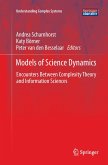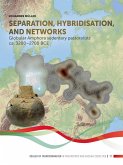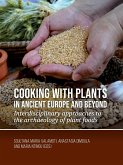How did people organize their settlements in later prehistoric societies? How do architecture, spatial organization, land divisions, and landscape use relate to different modes of social organization? The papers in this book contribute to a greater understanding of the complexity and dynamics of settlement and landscape organization in the Nordic countries from the Late Bronze Age to the Renaissance.Among the topics addressed is the notion of the wandering settlements as the standard settlement pattern across southern Scandinavia in the last millennium BC. This idea is nuanced by in-depth regional studies. Up-to-date methodological and theoretical insights are employed to shed light on over-arching patterns of demography and the interaction between humans and the natural world, as well as on technological adaptation and innovation. Contributions to the book explore the nature of the relationships between settlements: both symmetrical relationships, between neighbouring farmsteads, and asymmetrical relationships, between farmsteads representing different levels in a social hierarchy. Spatial and temporal relations between communities of the living and the dead are also discussed.This book provides a comprehensive update on current research and methodologies in settlement archaeology in the Nordic countries. It is intended for students, archaeologists, and the interested reader working with settlements, landscape use, and social organization.ContentsSettlement organization in Iron Age Scandinavia and beyond. Traditions, terminologies, regionalities and methodologiesMarie Ødegaard and Ingrid YstgaardEarly Iron Age village formation in Jutland, DenmarkNiels HaueSettlement structure and landscape use in Southwest Norway in the last millennium BCTrond MelingMadla Sør in Rogaland, Southwest Norway - a settlement with long continuity?Satu LindellMaintaining boundaries: Early Iron Age settlement dynamics and spatial organisation at Dilling in Southeast NorwayMarieØdegaard, Lars Erik Gjerpe and Linnea Syversætre Johannessen"The 207 BC Dust Veil Event" and the advent of iron reaping tools in ScandinaviaLars Erik GjerpeUncovering population dynamics in Southeast Norway from 1300 BC to AD 800 using summed radiocarbon probability distributionsKjetil Loftsgarden and Steinar SolheimPlant remains as sources to cultural history in Southeast NorwayKaroline Kjesrud, Luka Natassja Olsen, Irene Teixidor-Toneu, Jade J. Sandstedt, Anneleen Kool and Linda ChristiansenSocial dynamics at the Augland ceramic workshop: The introduction of soapstone in paste recipes from the Roman Iron Age and early Migration Period in southernmost NorwayChristian Løchsen Rødsrud and Per Ditlef FredriksenActivities and community organization in Roman Iron Age Vik, Ørland, Central NorwayIngrid YstgaardOld Uppsala, Eastern Sweden: Framing an Iron Age tributary societyPer FrölundBurial - settlement relations at Forsandmoen, Southwest NorwayBarbro DahlThe elite settlement at Ströja, Eastern Sweden, AD 450-1000Björn Hjulström and Marta LindebergDevelopment of the medieval villages in Southern FinlandTuuli T. HeinonenAnebjerg - A rural farm from the 17th century: Considerations on Renaissance building traditions in Denmark and what can be expected beyond the Middle AgesLouise Søndergaard
Bitte wählen Sie Ihr Anliegen aus.
Rechnungen
Retourenschein anfordern
Bestellstatus
Storno








